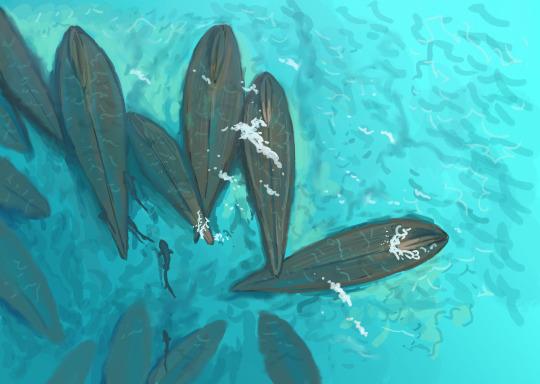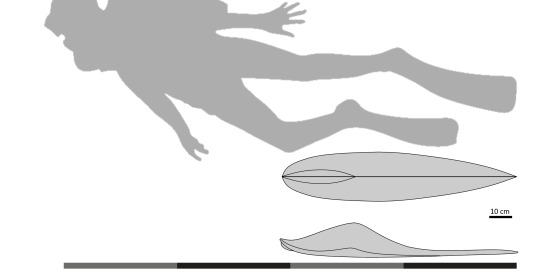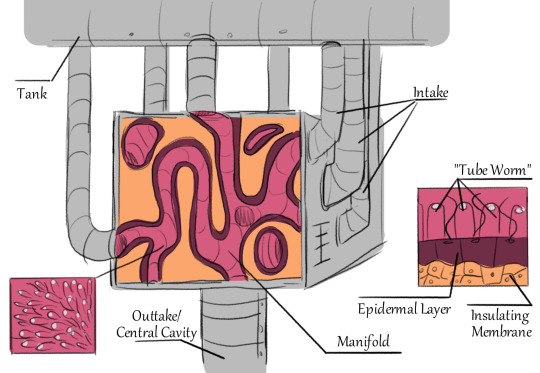#chemosynthetic
Explore tagged Tumblr posts
Text
my magnus archives hot take is that being an avatar and feeding as an avatar isn't inherently immoral. every living thing - with the exception of some chemosynthetic bacteria in the deep sea - lives off the death/suffering of others in some capacity. is it immoral for a bear to eat a salmon? is it immoral for a fungus to colonize the carcass of a bear? is it immoral for a deer to eat the fruiting body of a fungus? is it immoral for a deer to benefit from a salmon's suffering when it was eaten by a bear? why's it different just cus it's a human being eaten? saying jon should live on a written-statements-starvation-diet is like PETA: eldritch horror edition. free my man he just wanted a little snack
#humans have gotten much too comfortable being apex predators#we should release some polar bears into the american suburbs to put the fear of large predators back into them#us. i mean us.#this post sponsored by the hunt!#andy original#tma#the magnus archives#ask me about chemosynthetic bacteria in the deep sea. please. please. ooooh you wanna hear about symbiotic tube worms so bad......oooohhhh..
8 notes
·
View notes
Text
My last post about life found under hydrothermal vents got me really interested in the process behind chemosynthesis!
So I found this really helpful fact sheet from the US government's National Oceanic and Atmospheric Administration:
(it was free to find and download, so I assume I'm fine to share it here)


#marine biology#marine ecosystem#marine ecology#chemosynthesis#chemosynthetic bacteria#tube worms#marine mussels#mussel beds#ocean environment#weird environment#weird nature#protect the weird and wonderful#Ocean science#stem#ecological dynamics#photosynthesis#weird biology#biology#cool science#accessible science#open access
4 notes
·
View notes
Text
so relieved!!! We rescheduled water quality monitoring for friday, now I can focus on finishing preparing for my two (2) presentations tomorrow!
#one is on Movile cave#which a fascinating closed chemosynthetic ecosystem#which 33 species not found anywhere else in the world!!!#also the conditions of the cave could simulate what the earth was like during the early evolution of life#giving us insight into the first life forms on earth#our microbial mat weaving ancestors 🥲
3 notes
·
View notes
Text
i just had to pause a nature documentary to google a term :o that hasnt happened in AGES
#for the curious:#an epibiont is an organism which lives permanently on another creature!#the formal term for the 'other creature' is a basibiont#i love you NWF special on chemosynthetic oases <3 thank you for letting me learn a new thing <3#i gotta start watching documentaries abt other shit man. i know too much abt nature and space
1 note
·
View note
Text
Thinking about how life on earth may have started at or near hydrothermal vents.
1 note
·
View note
Text
Did you know that 4000 metres bellow the ocean there are chemosynthetic bacteria that are specifically evolved to digest the wood of trees that have grown on land?
The wood on the sea floor can come from trees that fall into lakes and end up in the ocean, or wooden ships that have sunken. (Called 'Wood-falls')
The reason why deep marine organisms are able to digest wood despite never seeing the light of day, let alone a plant - since plants are unable to grow in the deep ocean because of a lack of sunlight - is because the ocean is so isolated and scarce of food that when a new food source is suddenly available, organisms rapidly evolve to be able to eat it.
This is called 'Adaptive Radiation', and can also occur on isolated islands.

#Ocean#oceanology#marine biology#marine ecology#marine ecosystem#marine life#deep ocean#deep sea#microbiology#oceanography#oceancore#ocean floor#marine#seacore#Sea#deep marine life#sailorcore#fish#the abyssal#oceanic#sea#marine love#fun facts#ocean facts#marine biodiversity#evolution
8K notes
·
View notes
Text

I think many people didn't realize it, but the Permian bivalve I posted yesterday and made look like a ship graveyard was indeed over a meter long. Shikamaia was distributed throughout the global north and potentially employed chemosynthetic bacteria.

1K notes
·
View notes
Text
Iterator Spec Bio (Part 1)
I'm probably going to upload each one in it's own post, but here's an introduction to what this is going to be.
See, I've been trying to explain how iterators synthesize nutrients for a while, and have FINALLY started properly developing it. All this stuff from now on is just words I've copied from my existing master document of the subject at hand.
FOREWARNING
The definition of organ that I will use for iterator is a region or room within the structure of the iterator designated to a specific purpose. The Memory Conflux is an organ. This does not define the systems that connect them, however, such as the areas between RTA, MC, and GSB within Five Pebbles. I will also use node, organ, and colony interchangeably. Many organs are hidden away in other areas or even within the walls. These are the more “dangerous” ones. Rather, the environments within these organs are so extreme that no standard living creature could survive in them, or that being closed off is integral to their functioning.
Primary Chemosynthetic Node (PCN)
The Primary Chemosynthetic Node is the most integral part of iterator metabolism, and acts as the starting point. Hence the name “Primary” PCNs are sponge-like cubes which intake boiling fluid filled with noxious chemicals, such as many sulfur compounds. They are rather small. Within the lining of this manifold are many many colonies of small worms (referred to as “Tube Worms”) filtering the chemical-filled water. These worms work with symbiotic microbes in order to produce usable organic compounds, which flow into a central cavity to be used by other organs. This mimics conditions near hydrothermal vents, though it requires a constant source of heat powered by electricity in order to function. These nodes are often lined in rows, and may be very long. An iterator will contain multiple PCNs. There may be multiple tanks for intake and for outtake.

As demonstrated in the image, there are 3 distinct organisms within the colonial structure of the node. - The insulating membranous layer, which stores excess nutrients and helps regulate conditions. - A tough epidermal layer, with individuals containing a flagellum which controls waterflow through the manifold. - Tube Worms, which anchor to the epidermal layer.
Small, shelled organisms pick off dead Tube Worms. They’re extremophiles, and will die once taken out of the PCN for an extended amount of time. This is used to an advantage, as these organisms will travel to other organisms to decompose and reuse resources when near death, or when commanded to through chemical signals distributed in the node. However, I will be exploring this more on a different post elaborating more on the organisms specialized in decomposition and the disposal of dead or dying matter.
85 notes
·
View notes
Text
Imagine you are standing with your feet in the deepest part of the ocean and with the top of your head at sea level. As the tide rises and falls, the difference in water level is roughly equivalent to the thickness of two, or perhaps three, strands of your hair. Now let’s travel down from the surface. We first enter the Epipelagic Zone, which takes its name from the Greek epi, meaning surface, and pelagos meaning sea. The Epipelagic Zone is also known as the Sunlit Zone because sunlight penetrates the water and brings life to photosynthetic plankton, which converts carbon dioxide into energy. The Earth’s rainforests are not, as some people have stated, the ‘lungs of the world’. The Epipelagic Zone is. It produces up to 80 percent of our oxygen. It is also home to 90 percent of ocean life, including the most recognizable forms such as whales, dolphins, fish, sharks and jellyfish. As we stand in our ocean and continue down, about halfway between the top of our skull and the top of our ears, we leave the Epipelagic Zone and enter the Mesopelagic Zone. This zone, like the others, takes its name from the Greek meso meaning middle. But we are a long way from the middle, or even the average depth of the ocean. The Mesopelagic Zone is sometimes called the Twilight Zone, because the last faint rays of light from a sun high in the sky, are fading by the time they reach the top of this zone. Vertebrates and invertebrates live here in darkness, with many of them swimming upwards at night to feed. Some plant life also survives here. On our submerged body, somewhere between the bottom of our nose and the top of our mouth, we leave the Mesopelagic Zone and enter the Bathypelagic Zone. Bathy means deep. This zone is in perpetual darkness. No plant life lives here. Some, water-borne organisms are luminescent to attract prey or a mate. Many species here are totally blind, and most live on the detritus that falls from the higher zones. Just below the bottom of our sternum, before we reach our navel, we enter the Abyssopelagic Zone. Abyss means seemingly bottomless. The water is high in oxygen, but low in nutrients. There is very little discernible life and the water is cold – about 37 °F or 3 °C. Chemosynthetic bacteria thrive near hydrothermal vents in the Abyssopelagic Zone. What fish and invertebrates do live here feed on these bacteria. This, in a sense, is ground zero in the food chain. To stand in the deepest part of the ocean we need to stand in one of the trenches between the tectonic plates. In our imaginary exercise, we are standing in the Mariana Trench, located off the Mariana Islands in the Pacific Ocean. Trenches are extremely narrow. The one we are standing in, begins at our groin. In the 1950s, scientists began to notice distinct life in the trenches and started referring to them as the Hadal Zone. A Greek derivative again, but whereas the names of the zones above indicate where in the ocean they are located, the Hadal Zone was named to signify what. Welcome to hell. Let us begin our journey.
The introduction to The Frontier Below by Jeff Maynard is so hardcore!!
234 notes
·
View notes
Text
i cant help it im obsessed with finding incredibly niche fetish communities and just scrolling through them it makes me feel like a scientist studying chemosynthetic bacteria in a hydrothermic vent. not only will people jack off to anything, but they will somehow find hundreds of other people who jack off to the same thing. i found out theres an entire roleplay community on here dedicated to pretending dua lipa is hatecriming them for being gay
34 notes
·
View notes
Text
why am i not chemosynthetic. i need to huff a hydrothermal vent like a bong
31 notes
·
View notes
Text
This is so cool! Finding animal life beneath hydrothermal vents is incredible! Some of the things they found in the underwater cave systems in earth's volcanic crust include snails and tube worms. These tube worms alongside chemosynthetic bacteria, use the hydrogen sulphide in the chemical plumes from thermal vents by oxidising it to create energy and sugars to survive. How cool is that?!
I think this article also really demonstrates how important it is to conserve and protect lesser known ecosystems and species.
#protect the weird and wonderful#protect the ocean#ocean conservation#marine benthos#marine ecosystems#marine biology#aquatic ecology#aquatic creatures#ecology and conservation#marine ecology#deep sea#deep sea mining#deep sea creatures#deep sea conservation#Ocean thermal vents#tube worms#chemosynthetic bacteria#chemosynthesis
4 notes
·
View notes
Text
youtube
this shit is like cocomelon for me
guy who literally works at an aquarium and spends all day looking at and talking about marine life who nevertheless watches documentaries about marine life on his lunch break to relax
#all of the deep sea stuff by this channel is absolutely stellar btw. highly recommend checking out ‘chemosynthetic oases’#Youtube
22 notes
·
View notes
Note
There's this theory I've had about Zinogre for a while that I haven't told anyone. So, the thunderbugs provide Zinogre with an external source of power in the form electricity which it stores in battery like organs, could Zinogre potentially derive a decent chunk of the energy it needs to continue life functions from this instead of just from eating? Obviously, it still needs to eat to sustain its body, but could a living thing really power itself with an external electrical charge in this way? Theoretically, it would never need to spend its own energy to do much of anything if this was the case ...
Like you said, Zinogre wouldn’t be able to subsist on it alone as a big active animal, and the electricity is primarily for defense (and the glow possibly lures in Gargwa which eat thunderbugs).
But “electricity eating” is an actual thing in nature found in various bacteria native to low oxygen environments. The most famous genre are Geobacter and Shewanella. Electricity eating bacteria kinda goes to show that if there’s an energy source then something will evolve to eat it. Radiation both solar and gama can be processed by chloroplasts and radiotrophic fungi. Fungi and microbes can eat petroleum and plastic. And chemosynthetic bacteria can basically eat rock and mineral soup from hydrothermal vents.
If it exists then something can probably eat it.
#ask#monster hunter#questions#speculative biology#speculative evolution#monhun#monsterhunter#biology#monster hunter biology#zinogre#batwards-running
31 notes
·
View notes
Text

Spectember day 6: Vacuumal
There was a species of highly advanced space-faring aliens, they are now long-gone, but they still somewhat live on through their genetically modified and engineered organisms.
They had all kinds of organisms used for all kinds of tasks, this one was a type of Living rocket specialized for traveling between gas giants for now unknown reasons, for these organisms have been unattended by the creator species for so long that they lost their "tool use", or the use they had for the aliens as a tool.
Traits common to all Living rockets are:
Tetraradial symmetry: Inherited from starfish-like ancestors;
Closed circulatory system;
Decentralized brain;
Black skin: Used for protection against the UV radiation from the many suns;
Fins: Minor fins used for balance and Main fins used for locomotion;
Radio organ: An organ specialized for sending and receiving radio signals used in communication between the Living rockets and the Creator technology;
Organ bag: A sack containing and protecting the organs of the Rocket;
Gas bladders: Bladders used for storing gas and using them to launch the rockets into space but also changing directions once there (minor bladders);
Since their "programmed" functions have since atrophied they now travel from a gasous planet to another gasous planet, using the chemicals in the atmosphere to produce their own food as they are chemosynthetic organisms by design.
#my art#spectember#spectember2024#art#illustration#worldbuilding#spec bio#speculative biology#spec evo#speculative evolution#original species#alien species#spec
21 notes
·
View notes
Text
One thing i really like about studying deep ocean science is that a lot of the terminology I encounter just makes me feel like a wizard. Oh, what am I doing for my end of year project? Studying abyssal polychaete worms. Oh and they came from one of the many Abyssal Plains across the seabed? The same ones we discovered special metals from that produce "Dark Oxygen"? Oh ok.

In all seriousness though abyssal plains, ridges, etc, just the general seabed is really important part of the wider marine ecosystem as a whole, and I think that as a (hopefully soon graduated) scientist I have a vague ethical duty to inform people about them.
The Clarion-Clipperton Zone is a stretch of seafloor across the Pacific ocean. Divided into various sections and overseen by the International Seabed Authority, it regularly faces consideration by various international bodies for deep-ocean mining claims. The reason for this is because of these small, potato-sized clumps of precious metals that sit on the seabed. They have the exact mix of metals to act as batteries, and produce oxygen in the lightless to near-lightless depth of the Abyssal zone via electrolysis. This is INSANE for a number of reasons but my personal favourite is its implications for the origin of life, which previously where thought to have been most probably possible via anerobic chemosynthetic means. We could be looking at the cauldron of life and deciding to take it apart for (very expensively margined) electric cars, basically.
#clarion clipperton zone#dark oxygen#studying deep ocean science makes me feel like a wizard#the vast#tma the vast#marine biology#marine biology memes
12 notes
·
View notes